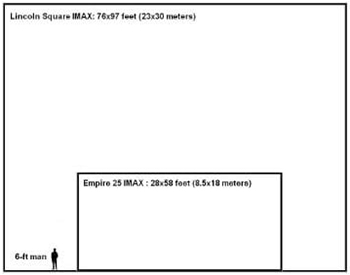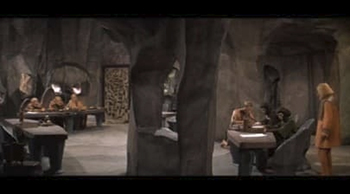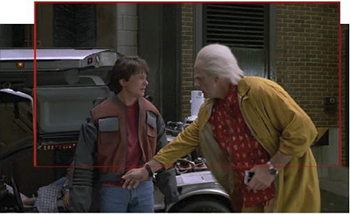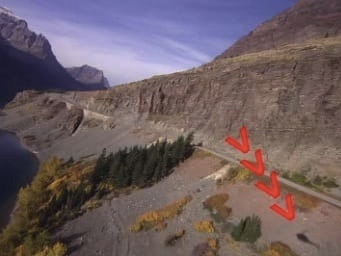5 Reasons Movies Look Like Garbage

For some of us, going to the movies is a transcendent experience. It's like church, if church had more car chases, spaceships, and nudity. And if you're too tired to leave the house (or have a pesky ankle monitor), watching films at home can be great too. But sometimes the wonders of cinema are ruined -- and not just by the appearance of Kevin James, but because of a flaw in the presentation. Such as how ...
Theater Projection Is Often Too Dim
Movies projected on the big screen are supposed to look crisp and glorious as a summer's day, but sometimes they look faded and terrible, like a summer's day in Buffalo. Don't let the teenage manager gaslight you into thinking that you've come down with a sudden case of glaucoma; a lot of theaters aren't properly projecting their movies.
For example, when 3D movies became a thing again, a lot of theaters wouldn't switch out the 3D lenses for 2D ones between shows. According to one source, it was AMC's "unspoken" policy not to change lenses, which could lead to the picture of a 2D movie being "as much as 85 percent darker" than it would have been if "properly projected."
Don't Miss
The big problem, though, is automation. In most theaters, projectors aren't run by anyone; the manager just has to press a button to turn them all on at the start of the day. Which is too bad, because projectionists are an important part of the moviegoing experience. This was never more clear than with the recent Solo. Putting aside how you feel about the movie itself (in which we learn that the Millennium Falcon houses the mind of a dead freedom fighter and Han Solo basically paid for the entire Rebellion), it's a great-looking flick. Cinematographer Bradford Young's "naturalistic" approach was influenced by the work of the legendary Vilmos Zsigmond and Gordon Willis. Projected properly, it looks amazing.
But when the movie hit theaters, fans complained that Solo was "hard to see." To a good portion of audiences, the movie looked like booty simply because the "projection standards" at many theaters "weren't up to par." According to Boston Light & Sound co-founder Chapin Cutler, the problem was directly linked to the lack of projectionists. Projectors "drift, bulbs dim, and they need constant adjustments." Cutler also claims that manufacturers "overstate how much light their machines put out."
And generally, a "projector bulb loses 10 percent of its brightness every 100 hours of use. Get to 750 hours on a bulb and you've lost approximately 75 percent." Meaning they need to be changed regularly. And as the late Roger Ebert pointed out, theaters intentionally under-lighting films in a mistaken attempt to save money has always been a problem, even before digital. So if a movie looks as clear as a smoke-filled Vaseline factory, it might be worth complaining. Or think about patronizing a theater that employs a full-time projectionist and changes its bulbs more often than Dalai Lamas change bodies.
Related: Why Movies Now Look Like Colorless, Lifeless Crap
The Default Setting On Your TV Makes Movies Look Like Garbage
If you want to watch a movie in your pajamas without getting dirty looks from strangers, you're probably best off watching at home. But even then, your experience might be subpar due to the settings on your TV. Traditionally, films are shot at 24 frames per second, and since TVs have a much higher refresh rate, people in the '90s thought that movies should be adjusted for home viewings. Enter "motion smoothing," which essentially duplicates frames from the movie to make them less jerky, resulting in a "soap opera" look.
In the past decade, this has become more standard -- and worse, it's become the default setting for a lot of TVs. This means a lot of people aren't even aware that this invention is mucking up their film viewing. While Christopher Nolan has so far restrained himself from going door-to-door and adjusting everyone on Earth's home theater setups, he and some other A-list directors are trying to put a stop to this scourge by agitating for TVs to have a "Filmmaker Mode." Yes, now you can watch movies the way great artists like Martin Scorsese, Patty Jenkins, and Rian Johnson do ... just, you know, without all the money and success. Filmmaker Mode is already being included in TVs this year, hopefully making movies look more cinematic and less like reruns of General Hospital.
Related: 5 Annoying Trends That Make Every Movie Look The Same
IMAX Thinks You're an Idiot
Until Hollywood figures out a way to jam its latest releases directly into your cerebral cortex, Total Recall-style, one of the most immersive ways to watch a movie is on a giant IMAX screen. The large-format cinematic experience was first pioneered in the 1960s, but garnered mainstream success with The Dark Knight, the first film of its kind to shoot certain scenes using IMAX cameras (it really gave us that "Gotham City is inhabited by giants" feel).
The problem is, after The Dark Knight increased the demand for IMAX theaters, the company expanded and began retrofitting theaters to fit their brand. Despite the fact that many of us associate the word IMAX with big-ass projection, according to IMAX, they have "no standard" screen size. So in the 2010s, we started getting "IMAX" theaters with far smaller screens -- as in two-thirds smaller.

Disgruntled cinephiles soon dubbed these theaters "LieMAX" (presumably because "Bullshit-O-Vision" didn't have the same ring to it). And since IMAX is a corporate name, even if their company built a theater with a screen smaller than a playing card, it could still technically call itself IMAX. Basically, they are able to "misrepresent" their product due to this "loophole" and still charge a premium. In response to a recent complaint about the size of an IMAX theater in Canada, the company defended its renovations, which enlarged the existing screen and moved it closer to the audience, which is at least a step up from simply shoving iPhones in people's faces.
Related: 6 Reasons Modern Movie CGI Looks Surprisingly Crappy
A Movie's Audio Is Mixed For A Theater, Even On Video
We've all experienced the frustration of watching a movie at home with wildly fluctuating volume. The actors sound like they're mumbling, but then an explosion, or a dog barking, or one of the many Rolling Stones songs in a Scorsese movie rattles the goddamn windows. There are movies that actually have the nerve to feature both gunshots and Benicio Del Toro dialogue, turning what should be a relaxing evening into a tense game of "Don't take your finger off the volume control."
Insanely, this is because most movies are only mixed for theatrical presentations. So if you're watching a movie on a TV that doesn't have surround sound, you're pretty much boned. It turns out that only "about 25 percent of studio movies" are remixed to "shrink" their soundtrack for home video. So if you don't have a 5.1 or greater surround sound setup, your TV is forced to down-mix the channels to 2.0, which is apparently your punishment for being poor and/or respecting your neighbors.
Related: 6 Annoying Movie Trends (And The Secret Reasons They Happen)
Aspect Ratios Get Botched All The Time
The aspect ratio consists of the dimensions of an image's frame, be it wide, boxy, or shaped like a goddamn cellphone, for some reason. That means that unless your TV happens to be exactly the right dimensions for a specific film, there will be letterboxing -- you know, those black bars on the top and bottom or sides of the frame. And this gets screwed up all the time.
When Netflix first started streaming movies instead of mailing them like common drug dealers, it quickly became apparent that a lot of their titles were cropped weirdly in order to fit screens. According to one report, this may have been due to a communication error between Netflix and the various distributors and rights-holders.


Even on HBO, movies are missing a significant portion of the original image. Why? Apparently HBO sometimes airs the airline versions of films, which are cropped to fill tiny screens designed less for artistic merit than to distract people from the fact that they're perilously hovering tens of thousands of feet above the Earth.
It's not just streaming and cable. DVDs and Blu-rays sometimes have the wrong aspect ratios too. When the Back To The Future trilogy first came out on DVD, II and III were wildly inaccurate, leading fans to question whether a high school bully had altered the timeline.

A lot of movies are shot in an open-matte as 4:3 square images and then cropped into a widescreen image for the theatrical release. Stanley Kubrick shot most of his movies like this and cropped them for theaters, but then released the full versions for home video because he reportedly didn't care for the black bars. Which wasn't without its problems. The original DVD release of The Shining has more visual information than the current Blu-ray, but you can also see stuff like the shadow of the camera crew's helicopter in the opening shot. Or it's a ghost that faked the moon landing or something


And in Eyes Wide Shut, they had to awkwardly zoom in for one shot because it was clear that Tom Cruise was wearing pants when he was supposed to be naked. (Or it's some secret Illuminati code or something.)
You (yes, you) should follow JM on Twitter!
For more, check out 5 Childish Mistakes Every Movie Makes:
Follow us on Facebook. It's free.